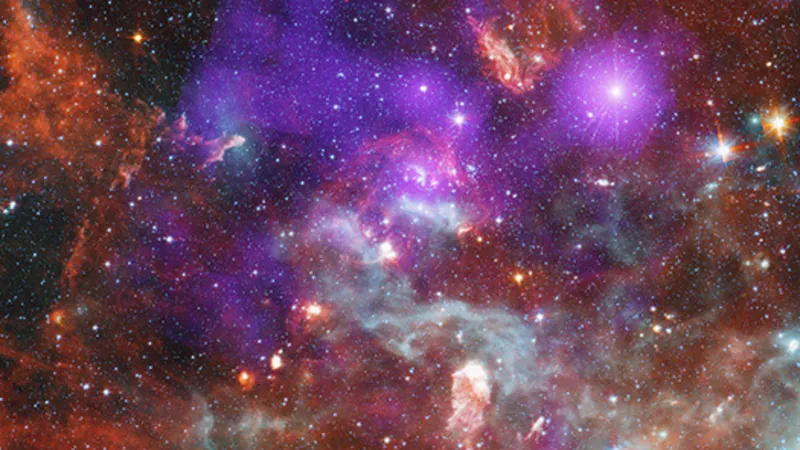
NASA's Chandra X-ray Observatory Discovers Alarmingly High-Radiation "Danger Zones" Around Young Stars!
2024-11-06
Author: Wei Ling
Introduction
In an exciting new study, NASA's Chandra X-ray Observatory, in collaboration with the retired Spitzer Space Telescope, has unveiled what they call "danger zones" for planets forming around young stars. This groundbreaking research sheds light on the perilous environment of star clusters, threatening the development of new worlds and intriguing those passionate about astrophysics.
Focus on Cygnus OB2
The team of astronomers focused on Cygnus OB2, the closest large star cluster to Earth at a staggering distance of 4,600 light-years. Home to a plethora of massive stars and a multitude of smaller ones, Cygnus OB2 has long been a focal point for stellar research. By performing long-term observations and meticulously stitching together images, they created an impressive mosaic that reveals the high-energy narrative unfolding in this celestial region.
Data Visualization
The Chandra data, presented in a regal shade of purple, illustrates the high-energy X-ray emissions in Cygnus OB2. Meanwhile, the Spitzer Telescope’s infrared data—portrayed in a vibrant palette of red, green, blue, and cyan—captures the cooler dust and gas and highlights the young stars that populate the area. This dual approach allowed researchers to create a compelling stellar census of the cluster.
Understanding the Danger Zones
But what makes these "danger zones" so perilous? The danger lies in the tremendous high-energy ultraviolet and X-ray radiation emitted by massive young stars, which can disrupt the intricate protoplanetary disks—dense clouds of dust and gas where planets are born—surrounding them. Scientists liken this high-energy bombardment to fiery blasts obliterating potential planets before they even have a chance to form.
Historical Context
Historically, our own Sun was surrounded by such a protoplanetary disk 4.6 billion years ago when it birthed the planets, including Earth. However, protoplanetary disks are transient structures. Astronomers have identified a process called "photoevaporation," where intense radiation from a star causes the material within these disks to evaporate, eventually leading to their disintegration.
Key Findings
In a thrilling revelation, researchers found that the massive young stars in Cygnus OB2 can accelerate the depletion of these disks significantly faster than in less crowded environments. They discovered that nearly 40% of young stars in less energetic areas maintain their protoplanetary disks, while this number plummets to just 18% in areas of heightened X-ray and ultraviolet emissions. Astonishingly, in the densest regions surrounding the most massive stars, only 1% of stars retained their disks—an alarmingly low figure that highlights these areas as the ultimate "no-go zones" for planet formation.
Further Insights
Additionally, another research team used data from Chandra to explore X-ray emissions within Cygnus OB2, revealing that intense emissions occur where disk winds collide, heating the surrounding gas and further contributing to the complex dynamics of this bustling stellar environment.
Conclusion
As we continue to unravel the mysteries of star formation and the conditions that allow planets to thrive, these findings bring forth both caution and excitement—a glimpse into the chaotic dance of celestial bodies and the unforgiving nature of the cosmos. Scientists remain committed to deciphering these cosmic interactions, which may lead to future insights about the formation of life-bearing planets in our universe. Stay tuned as we explore the infinite wonders of the night sky!


 Brasil (PT)
Brasil (PT)
 Canada (EN)
Canada (EN)
 Chile (ES)
Chile (ES)
 España (ES)
España (ES)
 France (FR)
France (FR)
 Hong Kong (EN)
Hong Kong (EN)
 Italia (IT)
Italia (IT)
 日本 (JA)
日本 (JA)
 Magyarország (HU)
Magyarország (HU)
 Norge (NO)
Norge (NO)
 Polska (PL)
Polska (PL)
 Schweiz (DE)
Schweiz (DE)
 Singapore (EN)
Singapore (EN)
 Sverige (SV)
Sverige (SV)
 Suomi (FI)
Suomi (FI)
 Türkiye (TR)
Türkiye (TR)